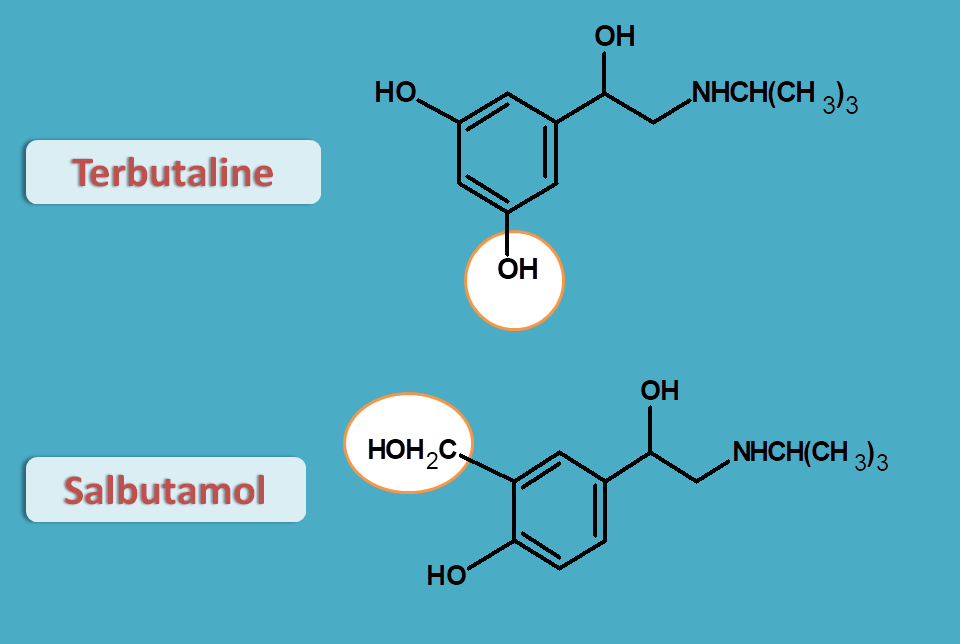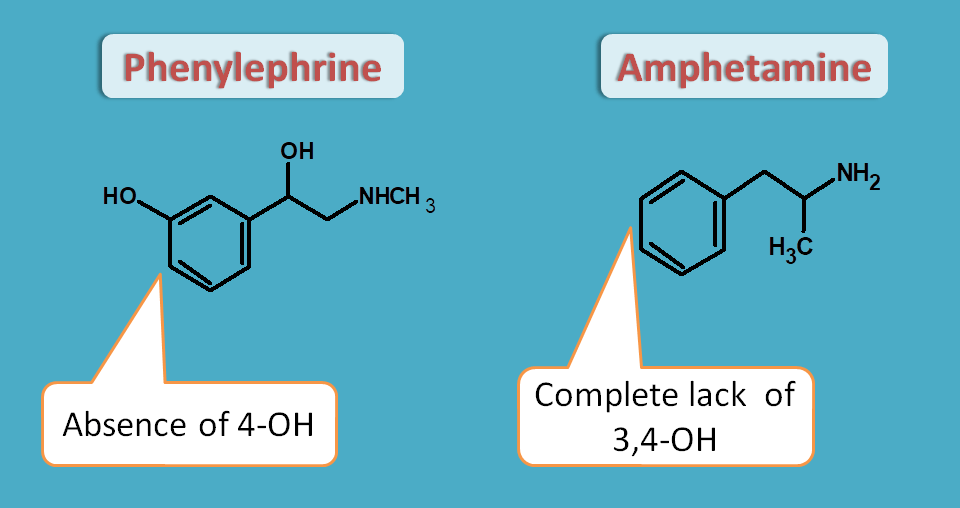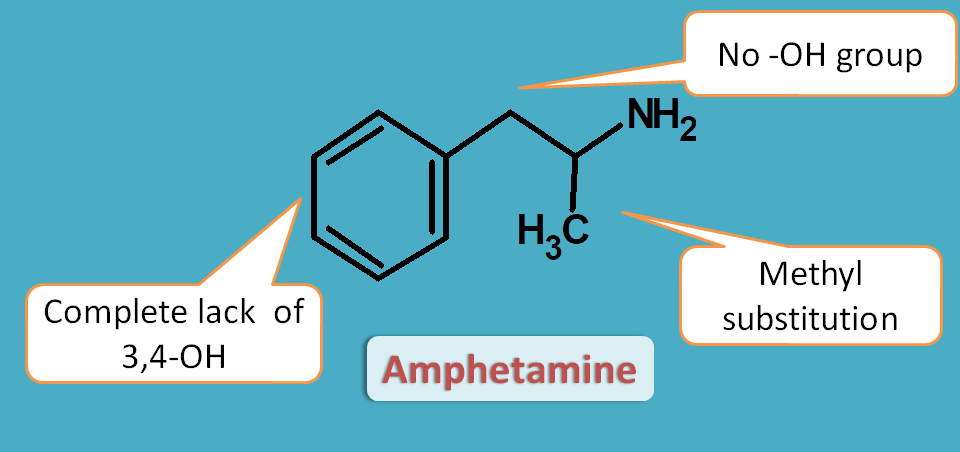Directly acting adrenergic agents
Catechol amines Vs Non-catechol amines
Catechol amines like epinephrine and norepinephrine are used as adrenergic agonists, then, what is the use of non-catechol amines? Which drugs are preferred?
Non-catechol amines are more preferred over catechol amines as the later have
- Less stability due to metabolism
- Less specific towards adrenergic receptors
- Impermeable into CNS due to polar in nature
Various structural modifications of catechol amines can produce non-catechol amines with more stability and receptor selectivity.
Increased stability
As catechol amines are endogenous mediators, they can be metabolised by one of the enzyme catechol-O-methyl transferase (COMT) which can metabolise the drugs having catechol group only. Therefore drugs lacking this catechol group are not metabolised by COMT hence more stable.

This can be achieved by removal of catechol hydroxyl groups as in phenylephrine, ephedrine and amphetamine
Increased selectivity
Beta2 selectivity can be produced by two approaches.
- Replacement of catechol with resorcinol
- Replacement of 3-OH with hydroxyl methyl group
For example, terbutaline has 3,5-dihydoxy groups (resorcinol) instead of 3,4-dihydroxy groups (catechol) and more selective for β2 receptors.

Similarly, salbutamol has hydroxymethyl group instead of hydroxyl group at 3rd position and again selective for β2 receptors.
Similarly alpha selectivity is produced by removal of hydroxyl group at 4th position.
Increased lipophilicity
Since non-catechol amines have less number or complete lack of catechol hydroxyl groups, they are lipophilic compared with catechol amines and can cross blood brain barrier producing CNS effects.
For example, phenylephrine has no hydroxyl group at 4th position whereas amphetamine has complete lack of catechol hydroxyl groups. Hence these drugs show central effects.

Indirect action
Removal of catechol hydroxyl groups and hydroxyl group at alpha position with additional substitution of methyl group at beta position produces drugs with indirect action.

Amphetamine is such a drug that indirectly increases adrenergic transmission.